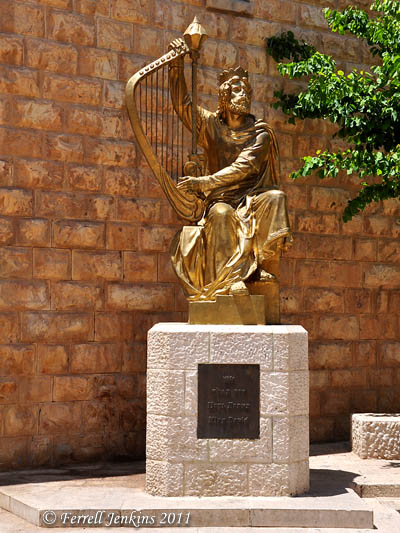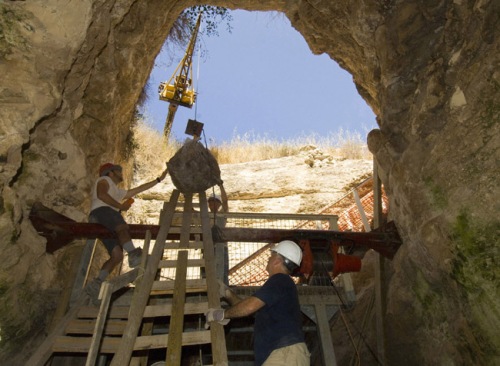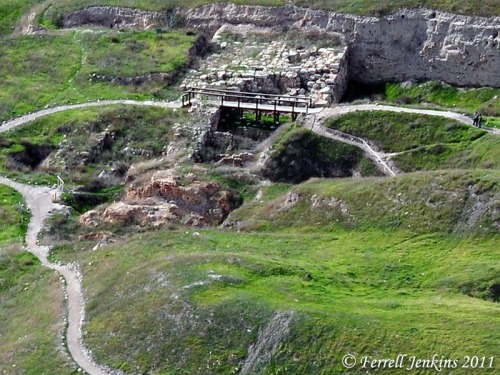'via Blog this'
David played the harp for Saul and for the LORD
As a young man David became well known in the royal household and was called upon to play the harp (Hebrew kinnor; often English lyre) for King Saul.
So it came about whenever the evil spirit from God came to Saul, David would take the harp and play it with his hand; and Saul would be refreshed and be well, and the evil spirit would depart from him. (1 Samuel 16:23 NAU)
The statue in our photo is near the “Tomb of David” and the room of the Last Supper on the traditional Mount Zion in Jerusalem.
David called upon the harp and lyre to awake. He said, “I will awaken the dawn!.”
A Song, a Psalm of David. My heart is steadfast, O God; I will sing, I will sing praises, even with my soul. Awake, harp and lyre; I will awaken the dawn! I will give thanks to You, O LORD, among the peoples, And I will sing praises to You among the nations. For Your lovingkindness is great above the heavens, And Your truth reaches to the skies. Be exalted, O God, above the heavens, And Your glory above all the earth. That Your beloved may be delivered, Save with Your right hand, and answer me! (Psalm 108:1-6 NAU)
David was later described as “the sweet psalmist of Israel” (2 Samuel 23:1).






